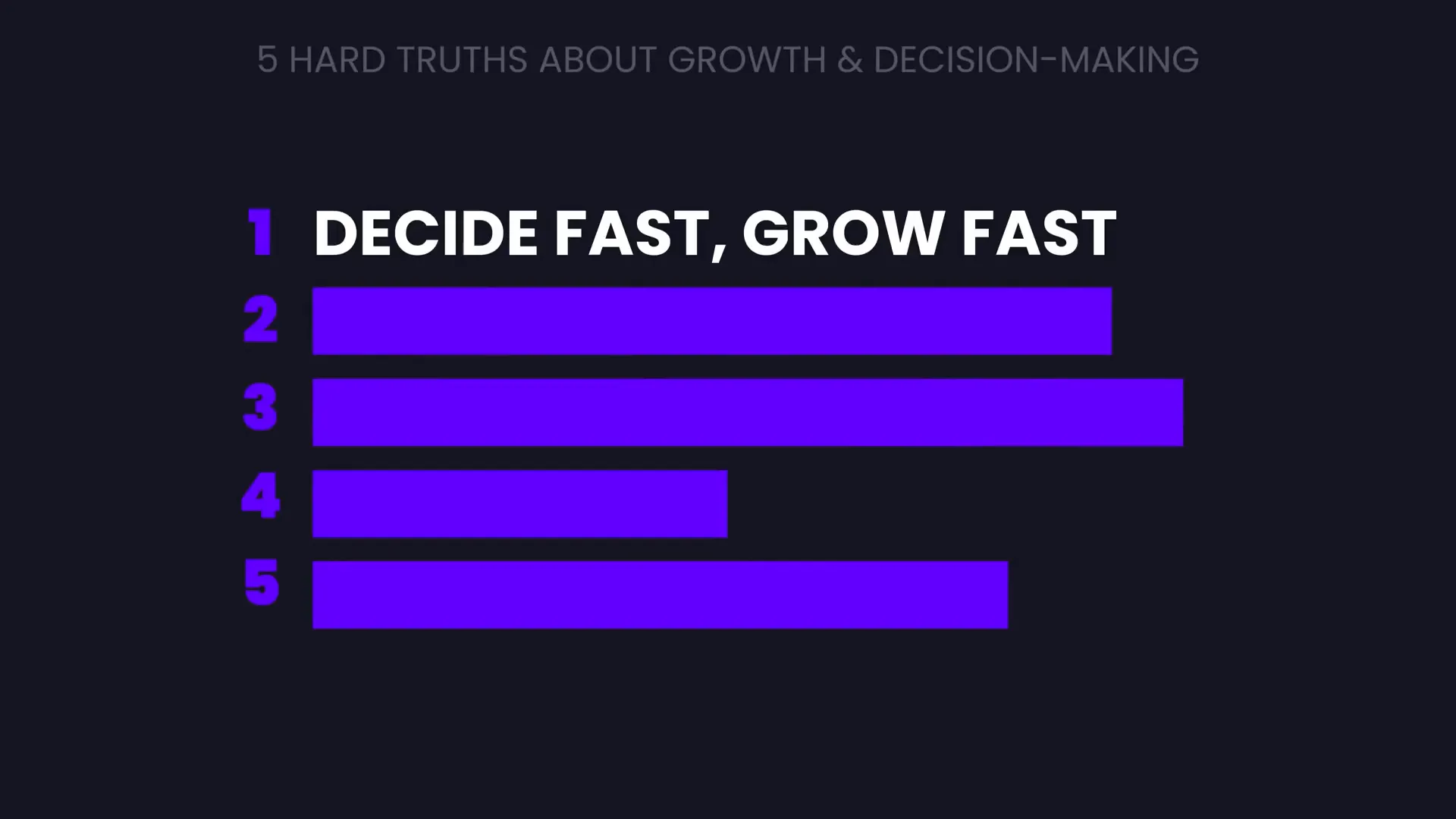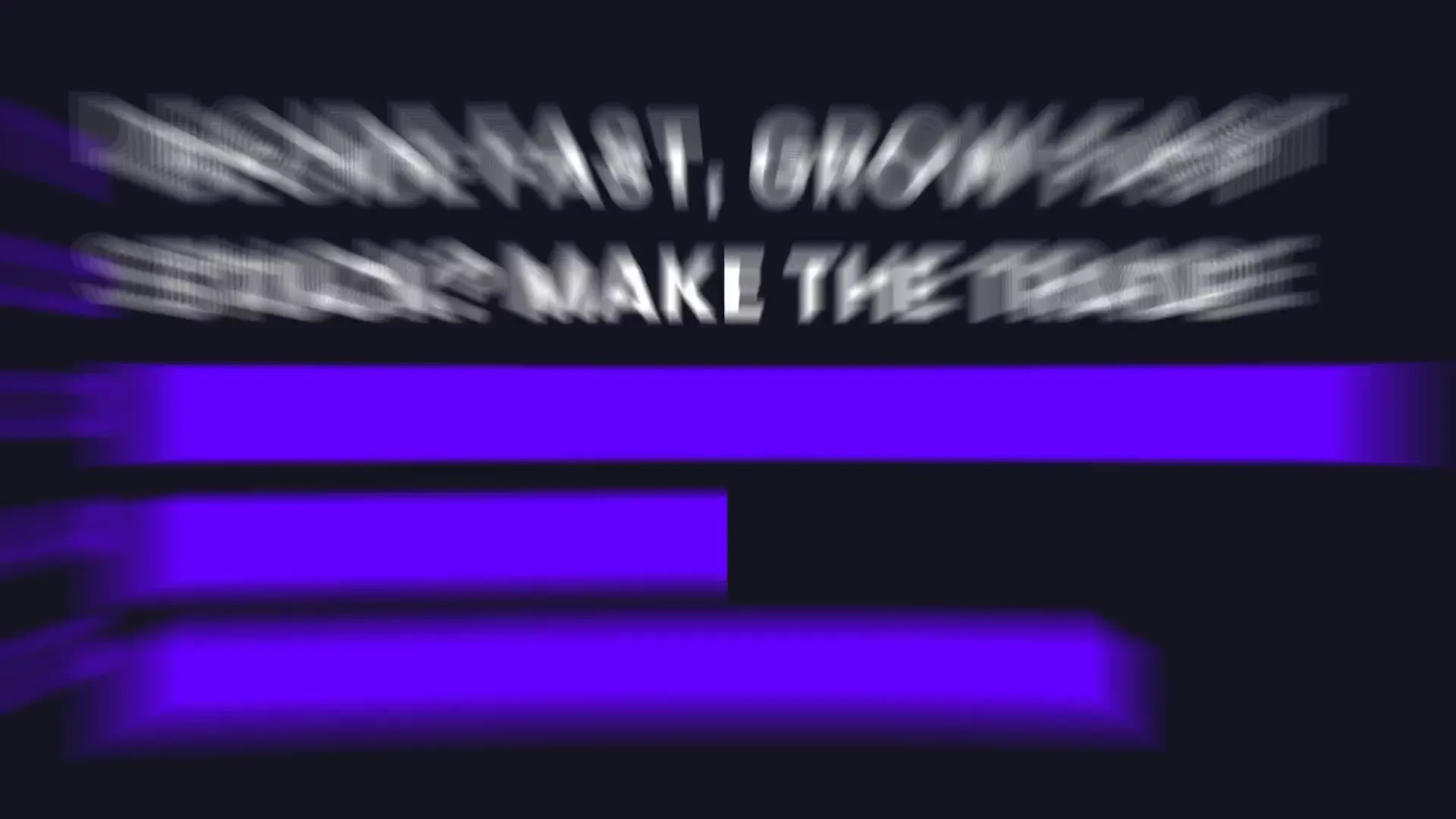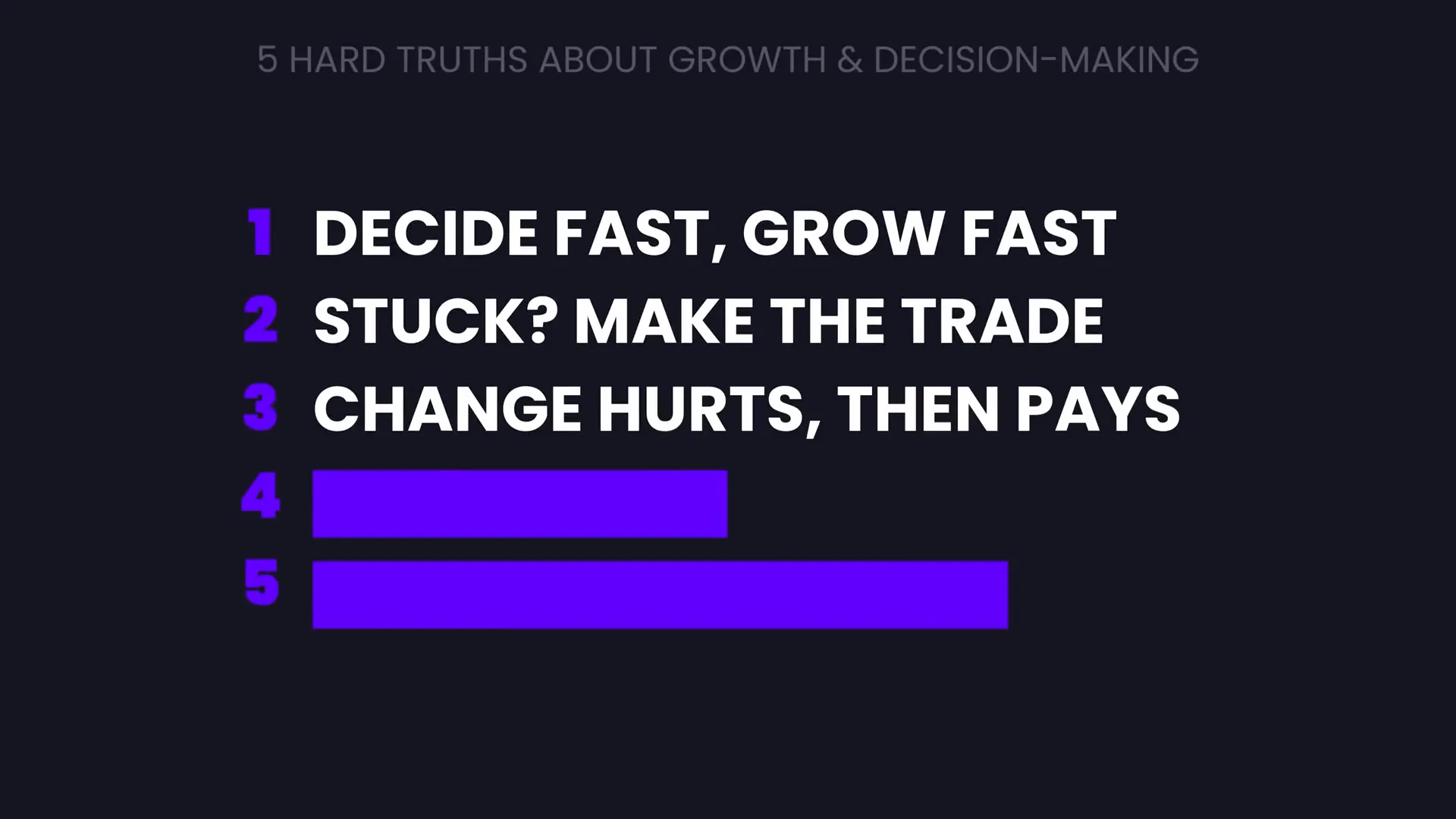May 20, 2025
How to Make Smart Decisions More Easily: A Proven Framework for Entrepreneurs

Making important decisions in business is one of the toughest challenges entrepreneurs face, especially as their companies grow. From my experience running Acquisition.com—a portfolio of companies that generated over $250 million in revenue in 2024—I’ve realized that the speed and clarity of decision-making directly impact the speed of growth. In this article, I’ll share why decision-making can be so difficult, illustrate with real examples from business owners, and provide a practical framework for making smart decisions more easily. Along the way, I’ll also show how you can leverage tools like GFunnel, an all-in-one business ecosystem, to streamline and optimize your decision-making and growth process.

Why Is It So Hard to Make Important Decisions?
Most people think decisions are just about choosing between options, but the real difficulty lies in the trade-offs involved. By the time you face big decisions, you’ve already made all the easy ones. The easy decisions are obvious and have little to no downside—those get done quickly and without much thought. What remains are the hard decisions, which are obvious but risky, and they almost always involve trade-offs.
Trade-offs mean you’re giving up something to gain something else. It could be trading time for money, risk for reward, or short-term comfort for long-term gain. The hardest part is that these trade-offs are rarely clear-cut, and the consequences often feel irreversible or difficult to reverse.
The paradox is that the easier choice is often to avoid making the decision at all. But not deciding is a decision too—it’s a decision to stay stuck, which comes with its own cost: the price of never achieving what you ultimately want.

Real-Life Example: Choosing Between Customer Segments
Let me share a story from a conversation I recently had with a relatively new entrepreneur who had been in business for about 18 months and hit $1 million in revenue. This is not a standard expectation for everyone, but he was doing well and growing fast.
His dilemma was that 80% of his revenue came from beginner-level customers—people he didn’t enjoy working with as much and who weren’t the best fit for his business. He wanted to attract higher-level customers—business owners rather than consumers—because those clients were better for his business and more enjoyable for him to serve.
Here was the trade-off: to attract these ideal customers, he needed to start saying "no" to the lower-tier customers who made up most of his revenue. Saying "no" meant his revenue would drop, at least initially. So, what should he do?
Many entrepreneurs stay stuck in this exact spot, unwilling to make the trade-off. Years later, they look back and see no change because they never made a decisive move.

How We Solved This Customer Trade-Off
We laid out a clear plan for him:
- Change the messaging in ads to speak directly to business owners, not consumers. For example, instead of targeting people "tired of their job," the ads targeted "frustrated business owners."
- Revise his lead magnet — he had a book about quitting his job, which attracted job-leavers rather than entrepreneurs. We rewrote it to focus on business ownership to attract the right audience.
- Adjust pricing — the cost of acquiring business owners was 5 to 10 times higher than for beginners, so he needed to raise prices and ensure the economics made sense.
These changes required tough decisions and upfront discomfort, but ultimately aligned his business with his goals. The alternative was staying dissatisfied and stuck.

Why Tough Decisions Often Come Down to Pain vs. Reward
One insight I’ve learned is that big decisions often aren’t made because of a grand vision or passion. They happen because the present situation becomes so painful that change feels necessary—anything is better than staying stuck.
Think about entrepreneurship: you take the leap for freedom and money, but those don’t come immediately. You invest time, money, and energy upfront, often seeing your bank account drop before it grows. This is like lifting weights—your muscles get smaller before they grow bigger.
This step-back-before-leap-forward dynamic is crucial. If you never take that step back, you won’t get the outsized returns that come from moving forward boldly.

Risky Decisions Are Inevitable After the Easy Ones
Once you’ve made all the easy decisions, the only ones left are risky. For example, if you want better people in your business, you can't just wish for it—you need to add friction to your process. You have to start disqualifying the wrong customers and qualifying the right ones with precision.
Raising prices is often a necessary step if you want to attract better talent or manage demand. Here’s how that works:
- Raise your price to control demand if you’re supply constrained (more demand than you can handle).
- Increase cash flow from higher prices.
- Use that cash flow to pay better advertising rates and higher compensation to attract top talent.
- Scale your team to meet demand effectively.
Each step carries risk, but the alternative is staying stuck and dissatisfied.

The Advertising Spend Paradox
Many small business owners cap their advertising spend at an arbitrary level, like $100 or $1,000 a day, because they fear diminishing returns. However, while the relative return (ROI) per dollar spent may decrease, the absolute return (total profit) often increases.
Here’s an example:
- Giving $10,000 might generate $100,000 in revenue, making $90,000 profit.
- Giving $1 million might generate $2 million in revenue, making $1 million profit.
Even if the ROI drops, the total profit is much higher with the larger investment. This mindset is crucial for growth-minded entrepreneurs.
Focus vs. Novelty: The Trade-Off in Business Growth
I recently spoke to a business owner running five different companies making around $1-2 million a year. She loved novelty and trying new things but got bored quickly, which limited her ability to build something big.
When you spread yourself too thin, you give up the massive upside that comes from focus. Here’s the trade-off:
- Option A: Keep chasing novelty, enjoy variety, but limit your business growth potential.
- Option B: Focus deeply, endure boredom and repetition, and build a much bigger business.
What you gain immediately is novelty, but what you get later with focus is a big, scalable business.

Why Focus Wins
Even if you’re highly capable and can multitask well, spreading yourself across many projects usually means sacrificing the aggregate upside. In my own experience, consolidating nine different ventures into one focused business roughly 10xed my income.
Most people aren’t willing to prune their “garden”—cut off branches to let the whole tree grow. But pruning is necessary to unlock exponential growth.

Spelling Out Your Trade-Offs Makes Tough Decisions Easier
When I help business owners make hard decisions, the key is to explicitly spell out the trade-offs. When you understand what you’re giving up and what you’re gaining, the decision becomes clearer. Here’s what you need to remember:
- Hard decisions mean you’ve used up all the easy wins.
- They often involve irreversible or difficult-to-reverse choices.
- You must accept the trade-offs and live with the consequences.
- The more decisions you make, the better you get at making them.
Remember: if you want everything, you will get nothing.

How GFunnel Can Help You Make Smarter, Faster Decisions
Making smart decisions quickly is vital, but it’s equally important to have the right tools to execute and track those decisions effectively. That’s where GFunnel comes in.
GFunnel is an all-in-one business ecosystem designed to help entrepreneurs, creators, and businesses connect and grow efficiently. Here are ways GFunnel can support your decision-making and growth:
1. Centralized Customer Relationship Management (CRM)
Understanding your customer segments clearly is the first step in making smart marketing and sales decisions. GFunnel’s CRM allows you to segment your audience, track customer behavior, and tailor your messaging precisely. This capability is crucial when deciding which customer groups to prioritize, just like the entrepreneur who shifted focus to business owners.
Learn more about GFunnel’s CRM features here.
2. Advanced Advertising Management
Raising prices and scaling advertising spend is a complex process that requires careful monitoring of ROI and cash flow. GFunnel’s advertising tools help you manage campaigns, test messaging, and optimize spend to ensure you’re investing in the right channels at the right times.
Check out GFunnel’s advertising solutions here.
3. Automation and Workflow Optimization
Adding friction to your sales process to qualify leads better can be done efficiently with automation. GFunnel’s automation features enable you to create qualifying questions, automate follow-ups, and disqualify leads that don’t fit your ideal customer profile, saving you time and focusing your energy on the right prospects.
Discover automation options here.
4. Affiliate Programs to Scale Growth
If you want to grow faster by leveraging others, GFunnel’s affiliate management tools allow you to build and manage affiliate networks that bring in qualified leads and sales, expanding your reach with less risk.
Explore affiliate features here.
5. Community and Networking
Making the right decisions often requires advice, mentorship, and support. GFunnel’s communities and discussion boards provide access to fellow entrepreneurs and experts to help you think clearly and decide quickly.
Join communities here.
Practical Steps to Make Smart Decisions Using GFunnel and the Framework
Here’s a step-by-step process, combining the decision-making framework from above with how GFunnel’s tools can support each step:
- Identify the hard decision: Recognize when you’re stuck between two difficult choices, usually involving trade-offs. Use GFunnel’s CRM and analytics to gather data on your current customers, revenue streams, and marketing effectiveness.
- Spell out the trade-offs: Write down what you gain and what you give up with each option. GFunnel’s note-taking and goal-setting features can help you organize your thoughts and track your decision criteria.
- Adjust messaging and targeting: Use GFunnel’s advertising management to test new ad copies targeting your ideal customer avatar. For example, shift from “tired of your job” to “frustrated business owners.”
- Revise lead magnets and offers: Create new lead magnets aligned with your new target audience using GFunnel’s funnel creation tools. This ensures your offers attract the right prospects.
- Optimize pricing and economics: Use GFunnel’s financial tracking and reporting to model the impact of price changes and their effect on cash flow and customer acquisition costs.
- Add friction to qualify leads: Set up qualification workflows and automation to disqualify low-value prospects and focus on high-value customers.
- Scale advertising spend strategically: Monitor ROI carefully with GFunnel’s ad tools and increase spend as your business grows, understanding that absolute returns will increase even if relative ROI decreases.
- Focus your efforts: Use GFunnel’s project and goal management tools to prune distractions, consolidate efforts, and focus on the highest-leverage activities.
- Engage community support: Use GFunnel’s community forums to get feedback, advice, and motivation to help you stick to your decisions and improve your decision-making skills over time.
Conclusion: Embrace Hard Decisions to Unlock Growth
Hard decisions are difficult because they involve trade-offs and risk, but they are also the gateway to growth. The key is to think clearly, spell out your trade-offs, and accept the discomfort of change today to gain the rewards tomorrow. Tools like GFunnel empower you to make these decisions faster and execute them more effectively by providing a comprehensive ecosystem for customer management, advertising, automation, and community support.
Remember, the speed of your growth depends on the speed of your decision-making, and the speed of your decision-making depends on how clearly you can think. Start making those tough decisions today, and use the right tools to help you along the way.
Ready to take control of your business decisions and growth? Create your GFunnel account now and unlock the power of an all-in-one business ecosystem designed to help entrepreneurs like you thrive.
Frequently Asked Questions (FAQ)
Why are important business decisions so hard to make?
Because by the time you face them, you’ve already made all the easy decisions. What’s left are hard trade-offs involving risk, cost, and irreversible consequences, which naturally create doubt and hesitation.
What is the best way to handle difficult trade-offs?
Spell out the trade-offs clearly: what you gain, what you lose, and the consequences of each option. This clarity helps reduce fear and indecision, making it easier to choose a path and commit.
How does raising prices help solve supply constraints?
Raising prices reduces demand to a manageable level, increases cash flow, and allows you to pay for better talent and advertising, which helps you scale your team and business effectively.
How can GFunnel assist in making smarter business decisions?
GFunnel provides tools for customer segmentation, advertising management, automation, financial tracking, and community support—all essential for gathering data, testing strategies, and executing decisions efficiently.
Is it better to focus on one business or spread across many?
While novelty can be enjoyable, focus usually leads to significantly greater business growth and profitability. Spreading yourself too thin limits your aggregate upside, even if you can multitask well.
What if I don’t want to give up novelty in my business?
That’s a valid choice. Just be aware that it usually means you won’t build something very big. Knowing your priorities helps you make intentional trade-offs rather than drifting aimlessly.
How can I improve my speed of decision-making?
Practice making smaller irreversible decisions to build confidence. Use frameworks that clarify trade-offs, and leverage tools like GFunnel to provide data and support, enabling clearer thinking.
Where can I learn more about optimizing my business decisions?
Visit GFunnel’s courses and join the entrepreneur communities to learn from experts and peers who share practical insights on decision-making and scaling businesses.